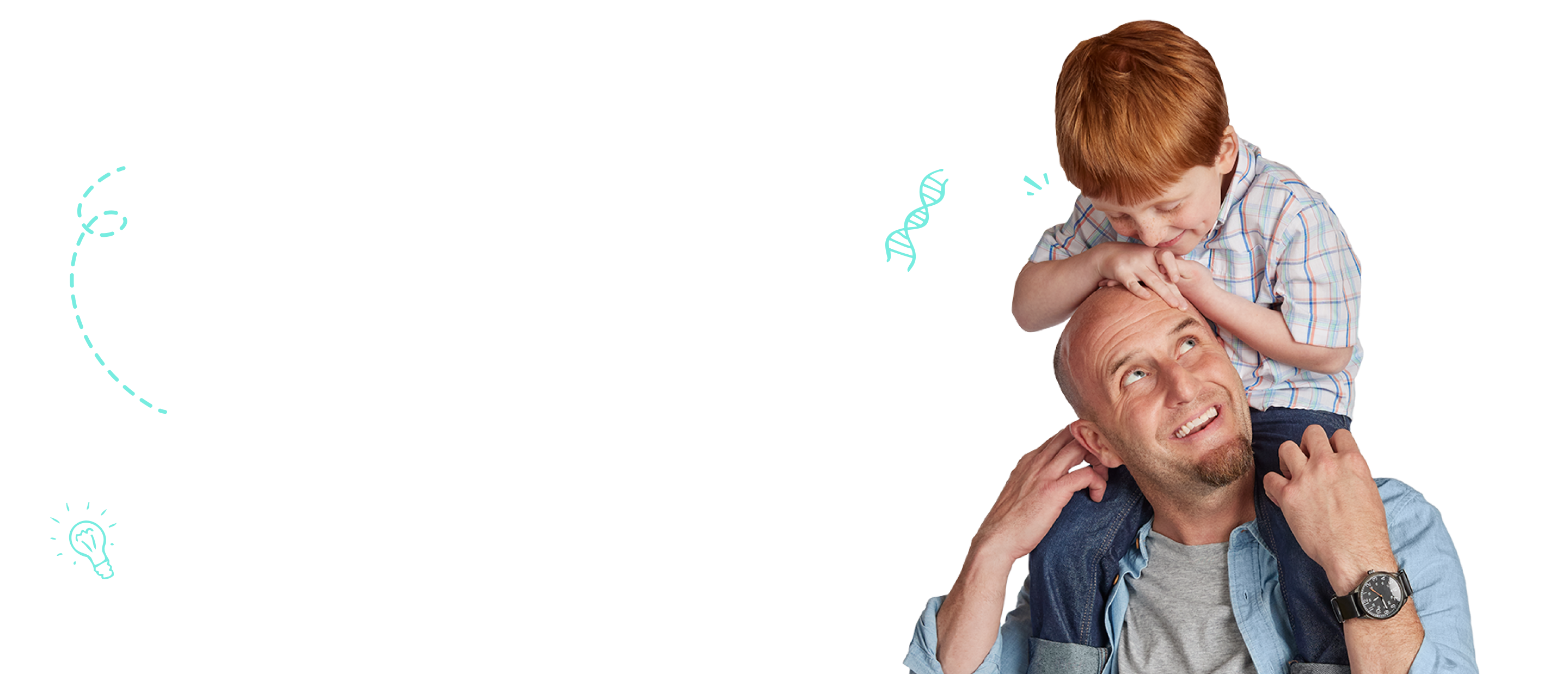Increasing
dystrophin
Since people with Duchenne muscular dystrophy have little to no dystrophin–which leads to progressive muscle loss and decline–a treatment for their Duchenne would ideally raise their dystrophin levels.



However, these treatments don’t increase dystrophin.
Currently, two different types of therapy can be used to increase dystrophin in people with Duchenne:

Helps a person with Duchenne bypass their genetic mutation to create a usable dystrophin protein within their own body.
With exon-skipping therapy, the muscle cells of a person with Duchenne make a blueprint for their dystrophin protein that’s 84-97% as long as the full-length dystrophin made by someone without DMD.
EXON-SKIPPING DYSTROPHIN* 84-97%
Each type of exon-skipping therapy works for a specific genetic mutation(s). A simple genetic test can help determine if there is an approved exon-skipping therapy for a person with Duchenne.
How Exon-Skipping Therapy Works†

Genes have sections called exons. The DMD gene, which makes our body’s dystrophin protein, has 79 exons. Dystrophin is a key part of a group of proteins that our muscles need to function properly.
Like interlocking puzzle pieces, these exons connect together in a very precise way to code a complete protein.

People with Duchenne have a mutation in one or more exons of their DMD gene. When exons don’t properly connect, their DMD gene makes an unusable form of dystrophin that cannot properly support their muscles.
This mutation is like a missing puzzle piece (seen here as missing exon 42). Without exon 42, exons 41 and 43 cannot connect – their shapes don’t fit. Exon-skipping therapy for DMD “skips over” exons so that compatible exons (exons 41 and 44) can connect.


With exon 43 skipped, the remaining puzzle pieces can now
connect together precisely to code a shortened but usable dystrophin protein.
†Hypothetical example

Inserts an engineered micro-dystrophin gene into a person with Duchenne to help their muscle cells produce a micro-dystrophin protein.
With gene therapy, the muscle cells of a person with Duchenne make a blueprint for their micro-dystrophin protein that’s 32–40% as long as the full-length dystrophin made by someone without DMD.
ENGINEERED MICRO-DYSTROPHIN 32-40%
Eligibility for gene therapy is determined by a patient’s doctor. Gene therapy is still being studied for its long-term safety and efficacy.

Watch and read inspiring stories of families living with Duchenne, and find out how they stay motivated to push through their challenges and live life normally.